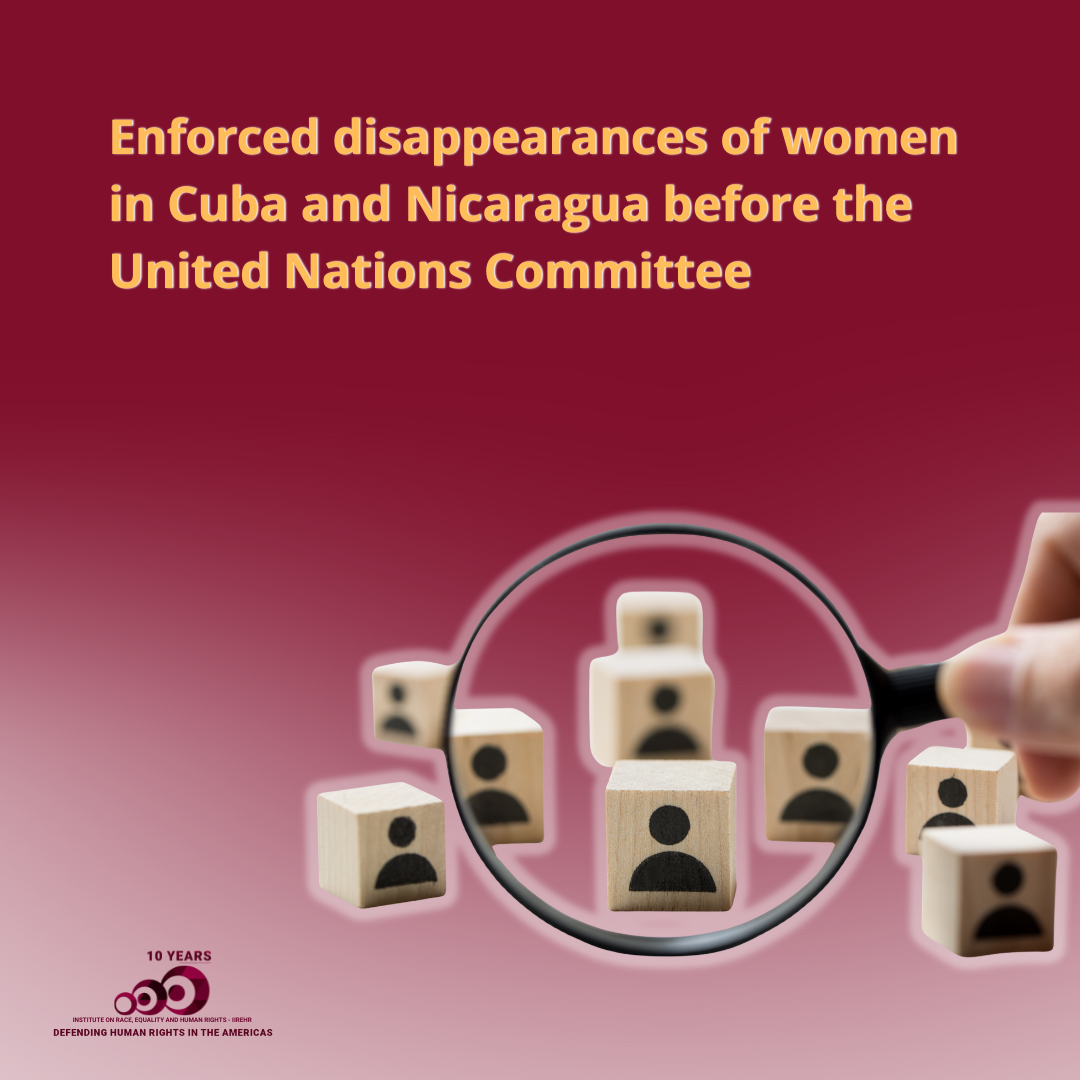Race and Equality reports on the forced disappearances for women in Nicaragua and Cuba to the United Nations Committee
Washington, D.C., September 10, 2025.– The Institute on Race, Equality and Human Rights (Race and Equality) participated in the regional consultation of the Committee on Enforced Disappearances (CED) as part […]

Washington, D.C., September 10, 2025.– The Institute on Race, Equality and Human Rights (Race and Equality) participated in the regional consultation of the Committee on Enforced Disappearances (CED) as part of its general comment on women, girls and enforced disappearances.
The objective of this CED initiative, which was held virtually on September 3, was to provide spaces for exchange with international organizations, civil society organizations, and interested people in the region to identify challenges, lessons, and specific and contextual recommendations that feed the content of the general comment.
In particular, the Committee was interested in receiving information on: a) addressing the gender and intersectional perspective; b) the differentiated impacts and the inequalities and specific circumstances of women and girls that affect the exercise of their rights; c) contexts that put women and girls at particular risk; d) the role of women as human rights defenders and peacebuilders and; e) the measures available to victims of enforced disappearance, including women searchers, to give effect to the rights enshrined in the International Convention for the Protection of All Persons from Enforced Disappearance.
Race and Equality presented information on Nicaragua and Cuba
In the case of Nicaragua, Race and Equality reported on cases of women who were disappeared during some point of their arbitrary detention for political reasons, particularly highlighting the cases of some of the 11 women who are still missing today, after being deprived of their liberty, according to data from the Mechanism for the Recognition of Political Prisoners in Nicaragua.
We share the cases of violations of their rights, with special emphasis on the challenges faced by women searchers, the violations of rights to which they may be subjected, and the differentiated inter-American standards that apply to them for their comprehensive protection and care.
As for Cuba, the Institute took the case of the women who are members of the organization Ladies in White (Damas de Blanco) to the CED, providing information on how these women are deprived of liberty every Sunday when they try to attend mass, generally for periods of between 1 and 4 hours, but in some cases extending up to 72 hours, without leaving any type of record in official records.
This pattern, which corresponds to what the CED identified in its “Joint Declaration on the so-called short-term enforced disappearances as a form of enforced disappearance”, iscombined with a practice of sexualized treatment of these women that includes everything from insults based on their gender at the time of deprivation of liberty to particular threats and strategies that seek to generate fear in women at the time of their release, having a differentiated impact compared to the forced disappearances of men.
The Committee thanked Race and Equality for its interventions in making it aware of issues that had not been made visible in the framework of the regional consultation and for presenting novel approaches in the analyses carried out. It should be noted that the case of the Ladies in White was the only one that was presented with respect to Cuba, which shows the need to reinforce the tasks of making visible what is happening on the island.
At Race and Equality, we maintain a strong commitment in this regard and we will continue to advocate with mechanisms of the Universal System and the Inter-American Human Rights System to denounce the situation of forced disappearance in Latin America, especially in countries such as Cuba and Nicaragua, where this problem is determined and aggravated by authoritarian regimes.

